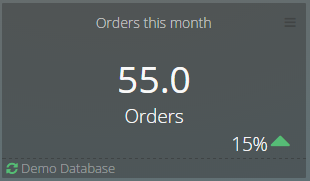Anyone working on projects or an organization surely has heard of KPIs - Key Performance Indicators.
Some even contribute to their calculation and are evaluated by it.
What are Key Performance Indicators and why are they useful?
KPI is simply the name given to a metric that is used to measure certain factors that are crucial to the success of an organization.
Each KPI is usually associated with a goal or objective to be achieved.
Regular determination of the value of KPI intends to measure the degree of progress towards objectives and their evolution over time:
Are we moving in the right direction?
Will we achieve the target if we continue?
The KPIs can differ from organization to organization since the focus of activity is also different. For example, the government may be concerned about an unemployment rate KPI, while a technology company is more concerned with a KPI regarding liquid results or customer retention.
How to define a KPI for our organization?
A performance indicator should follow the SMART type criteria:
- Specific- has to be specific and have a well-defined purpose for the organization.
- Measurable- it has to be possible to collect metrics and obtain a value.
- Assignable- indicates the result produced by one or more teams.
- Realistic- associated targets should be realistic.
- Time-related - bound to a limited period of time.
Let's look at a detailed example:
CCR - Customer Churn Rate
Purpose: We are able to retain our customers?
Frequency generally calculated every quarter or every month.
Data collection method: through the number of contracts that are renewed or not.
Data collection cost: is generally low since the organizations already have customer relationship management platform (CRM) that already provide this kind of data.
Scenario:
On April 1 the organization had 100 customers.
During this month, it won 20 new clients and lost 5.
CCR in late April = 5 / (100 + 20-5) = 4.34%
More examples of KPIs that can be searched online:
Financial
- EBITDA
- Net profit margin
- Return on Investment (ROI)
- Total shareholder return (TSR)
Customer
- Customer lifetime value
- Customer satisfaction index
- Customer complaints
- Net promoter score (NPS)
Sales and Marketing
- Market growth rate
- Cost per lead
- Social networking footprint
- Brand equity
Operations
- Capacity utilization rate
- Earned value (EV)
- Time to market
- Rework level
Human Resources
- Revenue per employee
- Employee churn rate
- Employee satisfaction index
- Salary competitiveness ratio (SCR)
Social Responsibility
- Carbon footprint
- Waste reduction rate
- Waste recycling rate
- Savings levels due to conservation and improvement efforts
All of them (and some more) can be found in a book that I strongly recommend:
Key Performance Indicators: The 75 Measures every manager needs to know
by Bernard Marr
And you? Do you define KPIs for your projects?
This is a guest post by Hélder Ferreira
Hélder is the Head of Service and Product Delivery at ISA - Intelligent Sensing Anywhere.
You can find the original post, in Portuguese, here.
